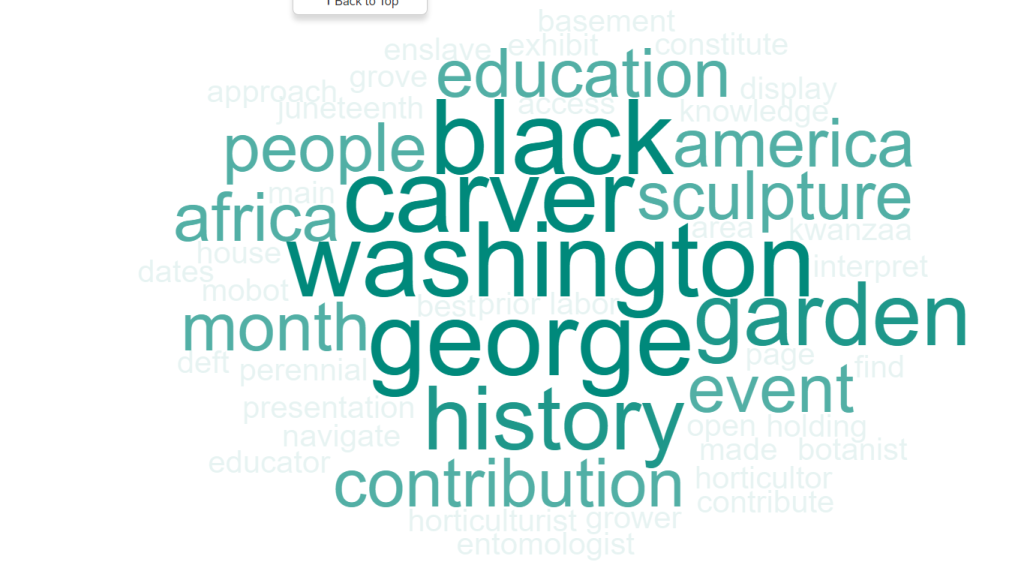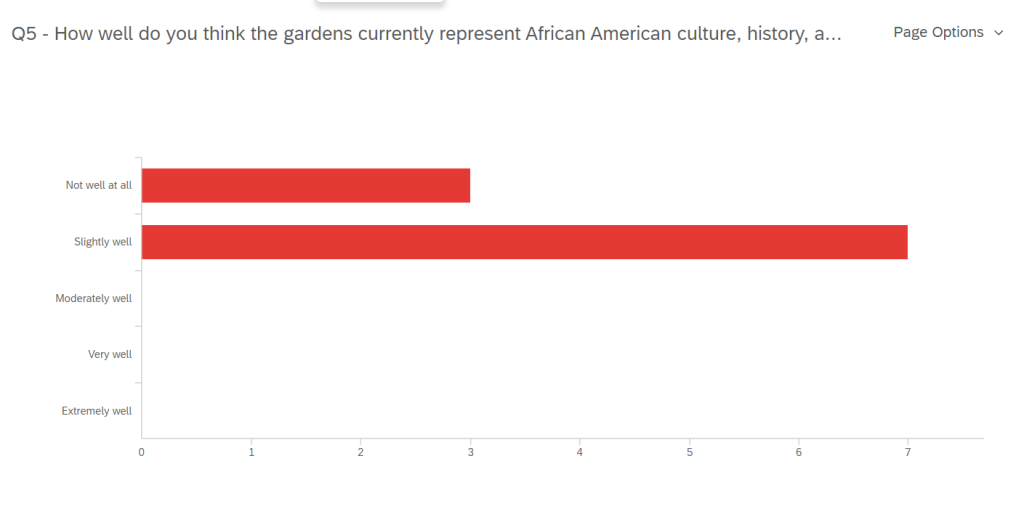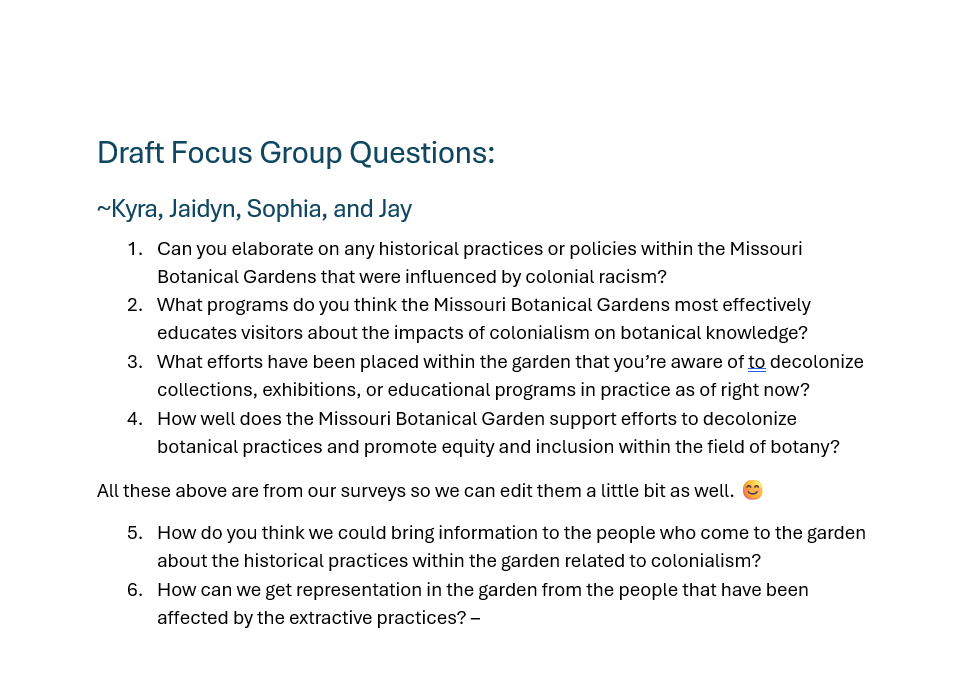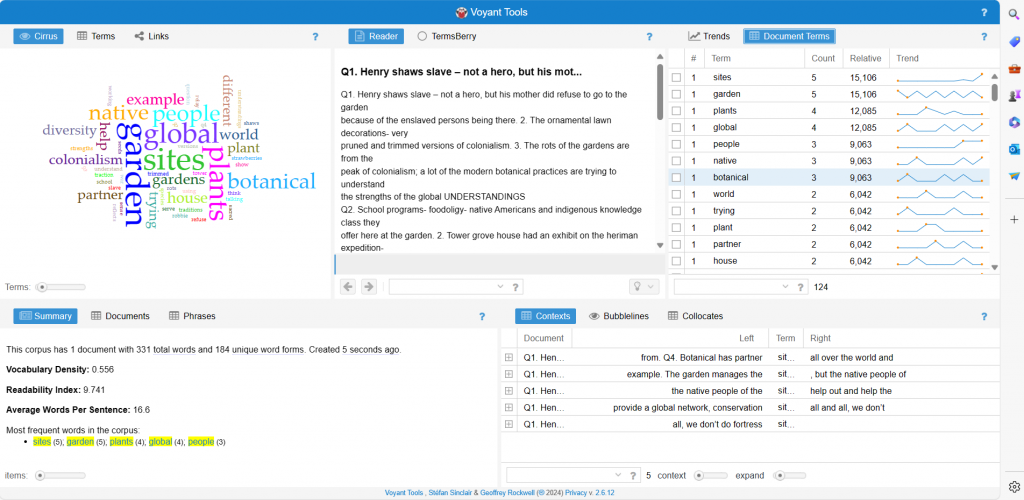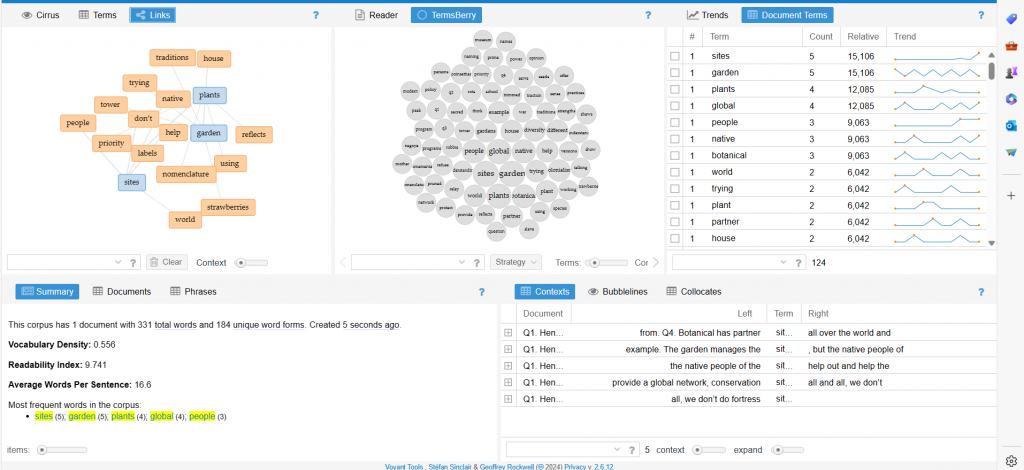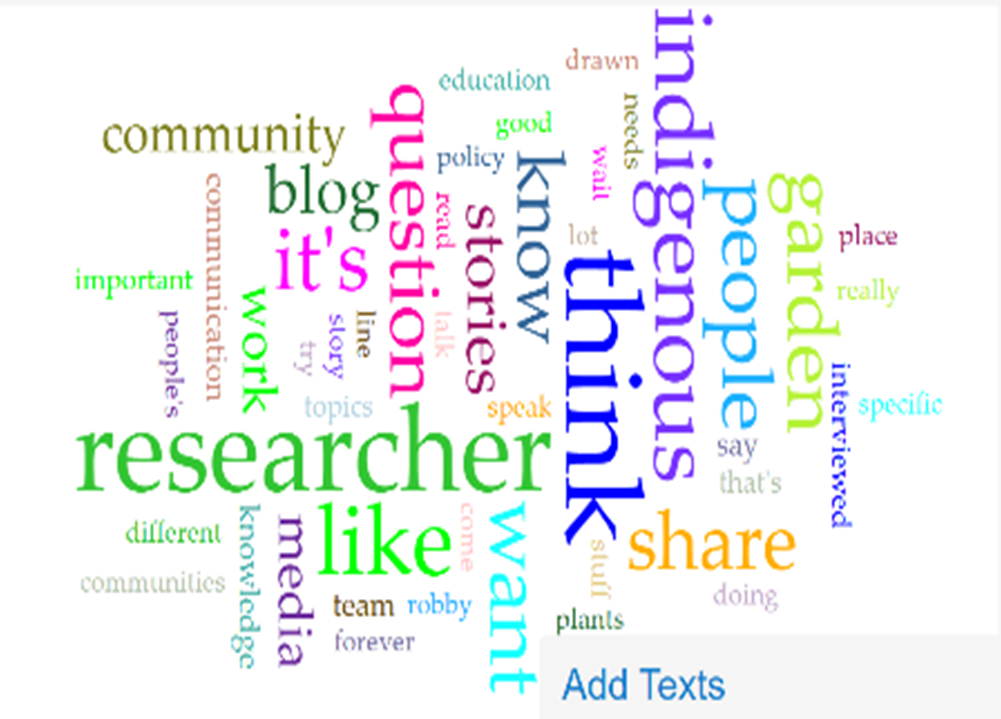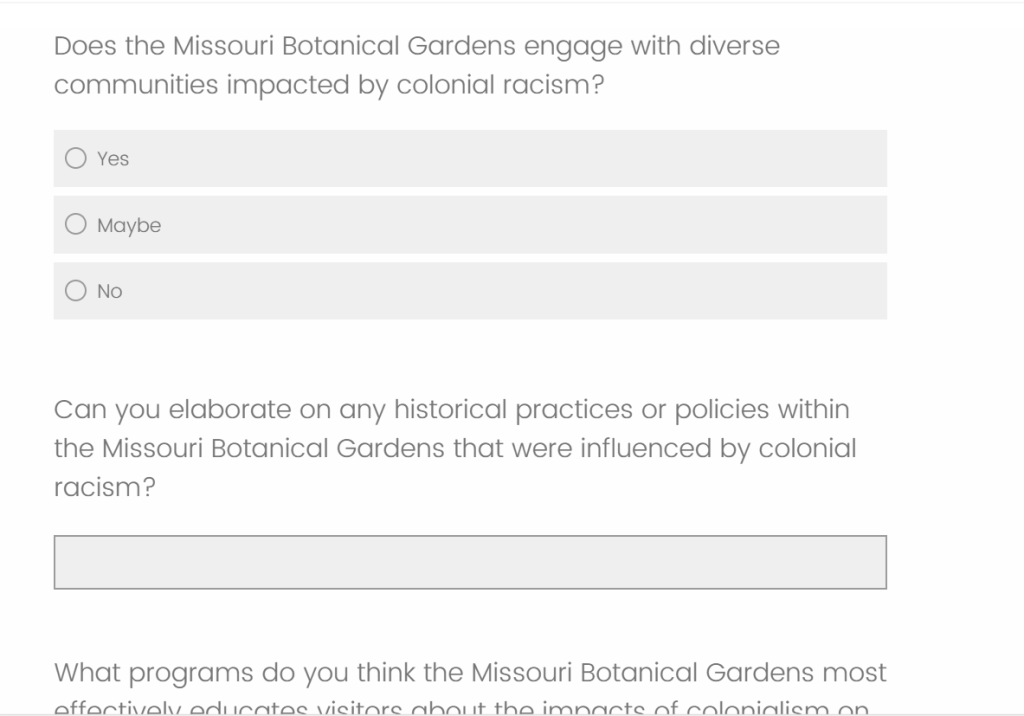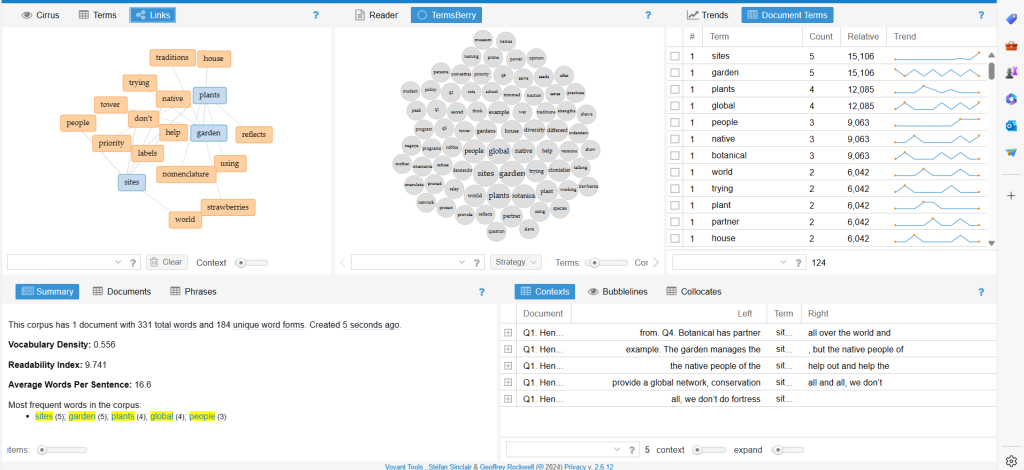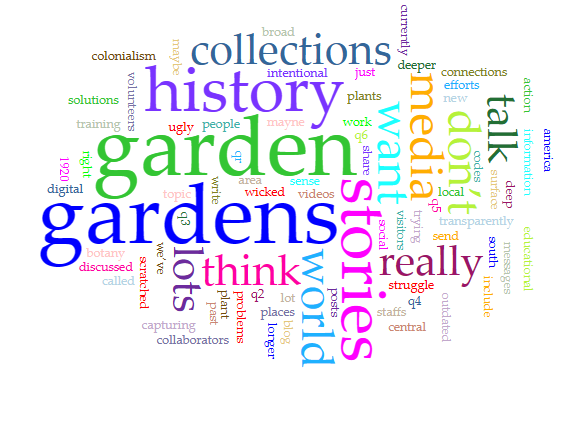Kasey Tipton
April 23, 2024
Our group’s focus is on Indigenous knowledge within the Missouri Botanical Gardens. Our research question is, “How is Indigenous knowledge lacking within the garden?” Our priority is finding the gaps of Indigenous representation. We used two mixed methods, interviews and surveys, in order to collect data. Our survey had received 7 responses and we interviewed 6 people. Doing the small focus groups helped us receive more nuanced explanatory data. However, I think surveys and interviews are both important in gathering data. I believe our survey did not go as planned because these are difficult questions being asked. It could be that some people do not want to feel incompetent, so they just didn’t answer the survey.
Our survey responses left some blank areas within our data. Furthermore, not only did we only have 7 responses, but some people did not answer certain questions. Our group made the visualization below using Qualtrics in order to show answers to our ranking question in our survey data. The question was “Where would you rank the priority of including Indigenous Knowledge in the Garden?” Our responses show that most people thought it was relatively high.
With this being said, our interviews went a lot smoother. There were two people during each interview, and we interviewed 4 times. Troy and I were taking notes, Kadynce was asking the questions, and Evitt was doing the audio recordings. People were able to be descriptive and more thorough with their responses. It seemed easier to people to answer questions in person, rather than thinking about what to type on a survey. Along with this point, in the interviews, people seemed to think longer to answer the same questions. If our group could do this differently in the future, we would try to stick to the idea of larger focus groups (rather than two people at a time) because it improves our data when people can bounce ideas off of each other and add to what others say. We asked six questions to each interviewee including:

The results of our data will help our group tremendously. It has shown us different areas that already include Indigenous knowledge. On the other hand, it has shown us areas of improvement. We can use this information to figure out how to portray Indigenous knowledge evenly throughout the garden. Our interviews overall had similar responses with the survey. For example, our question, “Where do you think Indigenous Knowledge belongs in the garden?” A lot of our responses said that it should be easily accessible in places that involve Indigenous knowledge. In another word, everywhere. One of the most important notes that was given was for us to help the garden improve on allowing for Indigenous knowledge to be important year round. Rather than celebrating it for a specific month/week. The responses in the interviews were easier to interpret than the surveys because they were more detail-oriented.
Using mixed methods on this topic was very important. It gave us multiple different viewpoints on these important topics. Even though our survey and interviews went very well, I think it would be important to hear about how the public feels about Indigenous knowledge. I would like to hear the perspectives of the garden visitors and if they have even heard of Indigenous knowledge within the garden. This can help us in the fall semester because now we know how the workers in the Garden feel about this topic and their insights.
